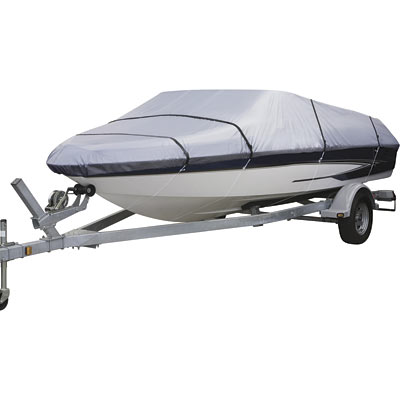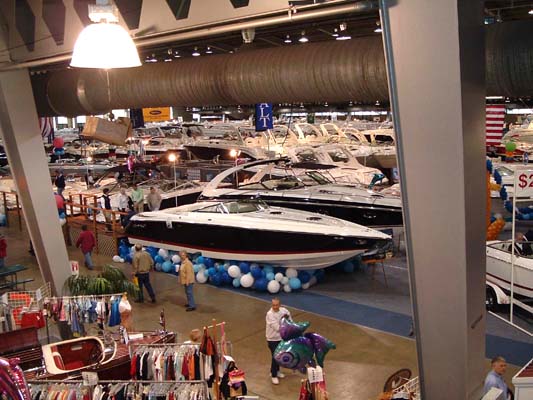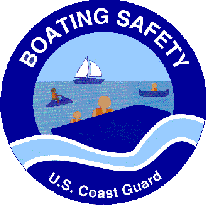How to Trailer a Boat
 Not everyone can afford to rent space at their local marina and so some people find it more prudent to store their boats at home and simply use their car to move their boats from their house to the water. Here are some tips on how to trailer a boat with ease:
Not everyone can afford to rent space at their local marina and so some people find it more prudent to store their boats at home and simply use their car to move their boats from their house to the water. Here are some tips on how to trailer a boat with ease:
Plan each step of your boat launch, before you leave your driveway. Who is with you, family and/or friends? If so, spend some time with them so they know exactly what will happen at the boat ramp, and what is required of each of them. It is a great idea to perform this in an out of the way place (not on the ramp itself), so your tires and bearings cool down before entering the water.
Make sure you’ve prepared the boat before you head down the ramp, by removing the tie-downs, placing lines in the appropriate places, and double-checking your sea-cock and drain plug. Make sure everyone knows exactly where they will walk the boat, and remember to secure the boat to the dock, so it doesn’t float away.
Every step of the way, you need to be ever mindful of safety. Remember the safety chain (making sure it’s either secured when trailering or unsecured at the bottom of the launch ramp, as determined by what you are doing). And don’t let anyone get behind the boat and trailer, or between the boat and the dock.
Before you leave home, make sure you check your tires and hubs/bearings. Make sure they are greased, filled and in good working condition. Also make sure to check your lights, your breaks and for outboard oil leaks. Remember, a safe trip is the best trip.


 Although the Screw propeller had been added to an engine as early as the 18th century in Birmingham, England by James Watt; the engine powered by
Although the Screw propeller had been added to an engine as early as the 18th century in Birmingham, England by James Watt; the engine powered by  As the specter of high oil prices looms throughout the summer, you can still find discounted boat oil online. Though many brands have slightly increased their prices, the internet has been a great resource of low priced oil. Name brands such as
As the specter of high oil prices looms throughout the summer, you can still find discounted boat oil online. Though many brands have slightly increased their prices, the internet has been a great resource of low priced oil. Name brands such as  If you own or operate a sailboat, commercial fishing vessel, or recreational powerboat, now you can keep our waterways clean by properly managing your oily bilge water for free! Oily bilge water pump out stations have been installed at many marinas and lakes for the public to use, and oil absorbent pads are often available for free to help absorb
If you own or operate a sailboat, commercial fishing vessel, or recreational powerboat, now you can keep our waterways clean by properly managing your oily bilge water for free! Oily bilge water pump out stations have been installed at many marinas and lakes for the public to use, and oil absorbent pads are often available for free to help absorb  In two separate deals, Affinity Events added four boat or boat/RV consumer shows to its lineup, along with seven RV consumer shows, the company said in a press release yesterday. With the recent acquisitions, the company now produces 15 boat shows around the nation.
In two separate deals, Affinity Events added four boat or boat/RV consumer shows to its lineup, along with seven RV consumer shows, the company said in a press release yesterday. With the recent acquisitions, the company now produces 15 boat shows around the nation. Part of making your boat run well is to regularly change your oil filter. Ideally, you’ll want to change your
Part of making your boat run well is to regularly change your oil filter. Ideally, you’ll want to change your 
 The summer vacation season began two weeks ago and the official start date for summer is another week away. The prime time for boating is now and if you’ve already cleaned your boat and changed your
The summer vacation season began two weeks ago and the official start date for summer is another week away. The prime time for boating is now and if you’ve already cleaned your boat and changed your  You should change your
You should change your  Depending on your engine type, how fast it could potentially go and how quickly it will burn through oil, you have several brands to choose from. Some people align their engine brand with the oil (such as using
Depending on your engine type, how fast it could potentially go and how quickly it will burn through oil, you have several brands to choose from. Some people align their engine brand with the oil (such as using  This week marks the beginning of hurricane season. Here are some basic tips to help you out in case you live in a region of the country that is afflicted by these storms:
This week marks the beginning of hurricane season. Here are some basic tips to help you out in case you live in a region of the country that is afflicted by these storms: